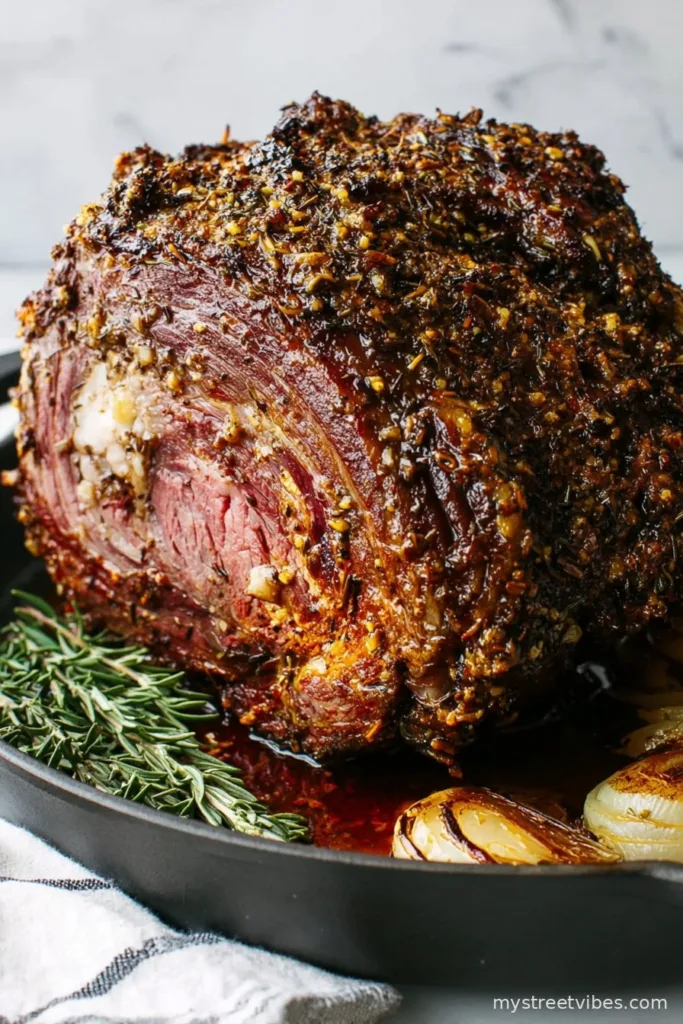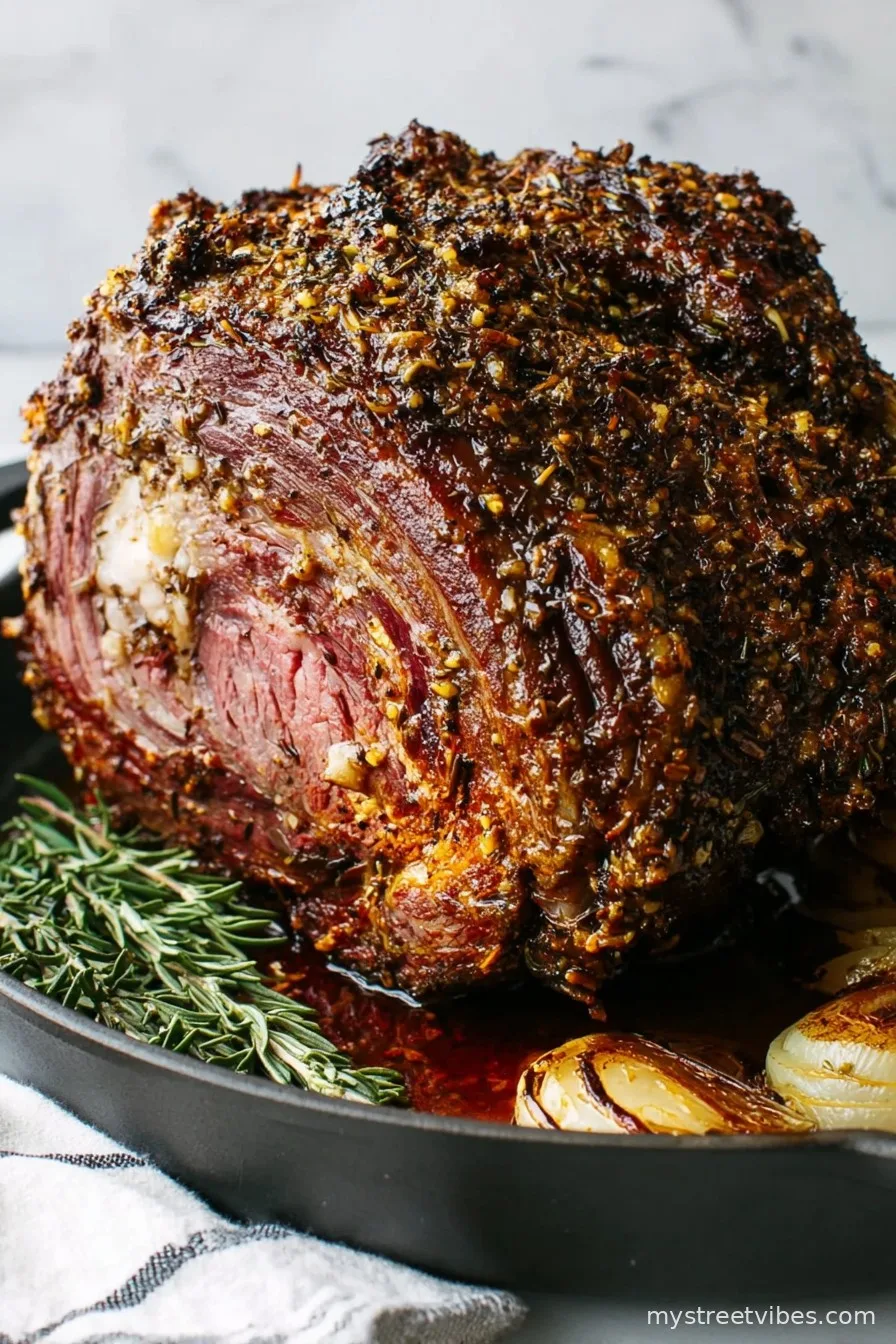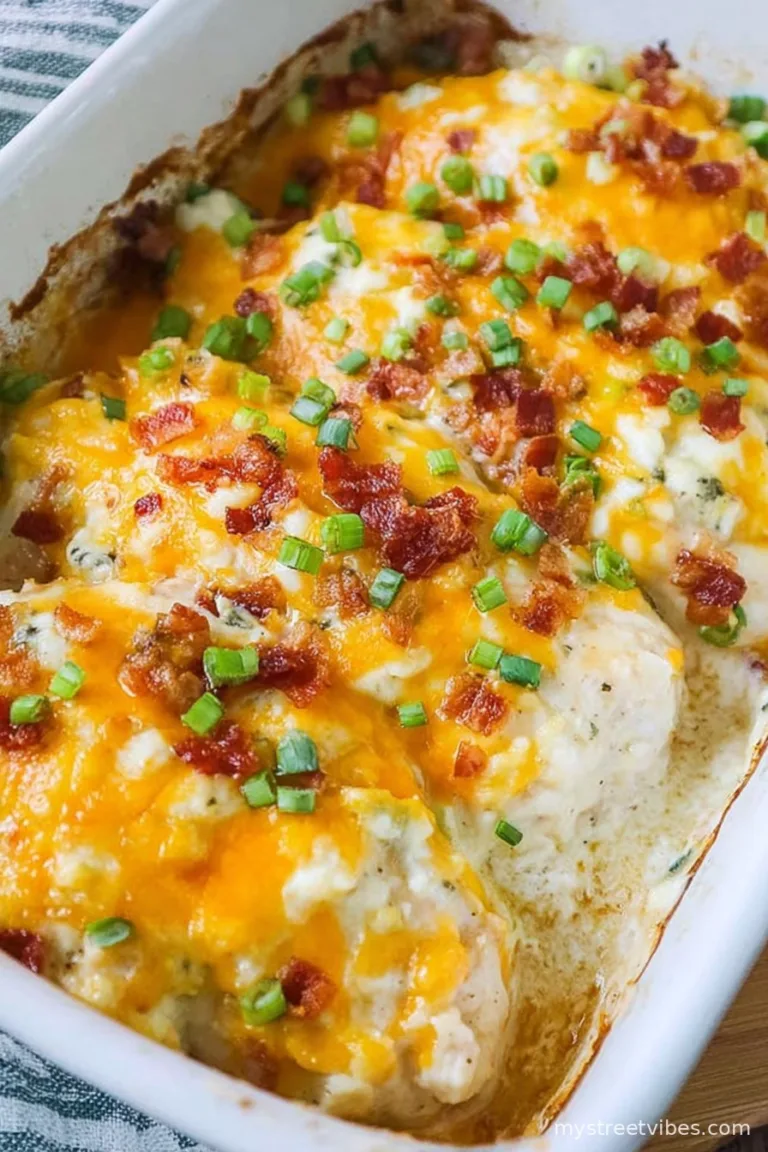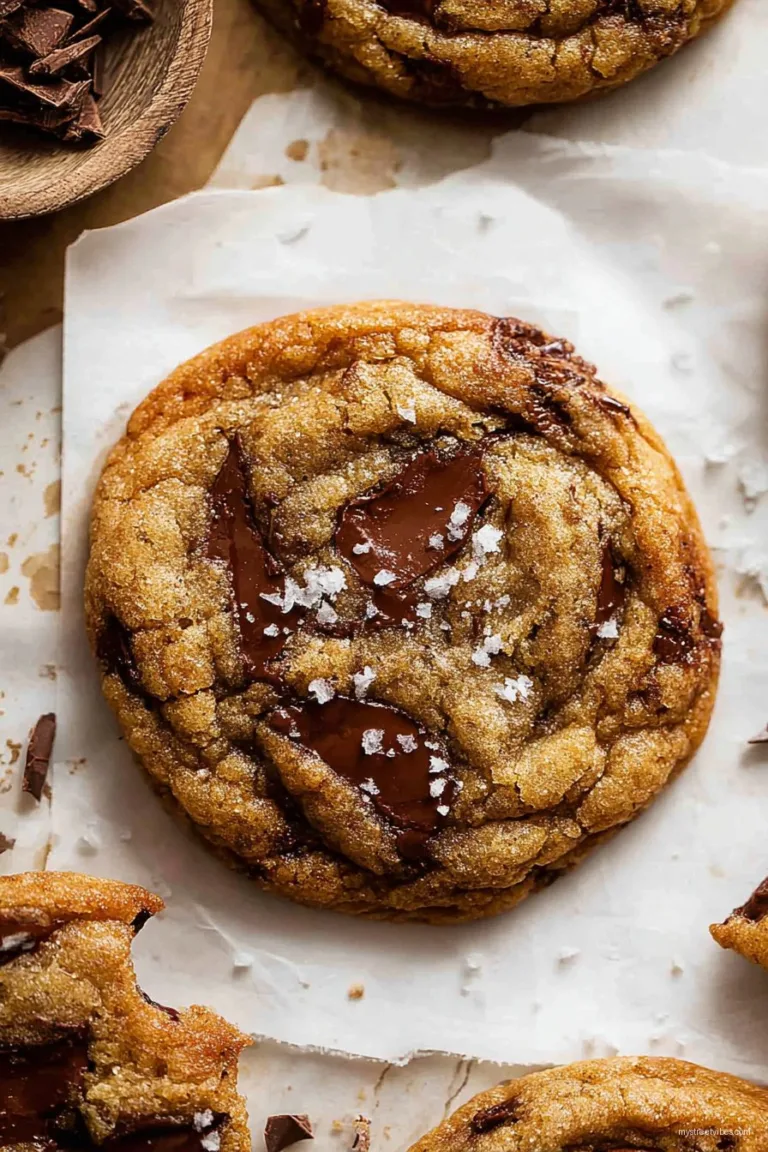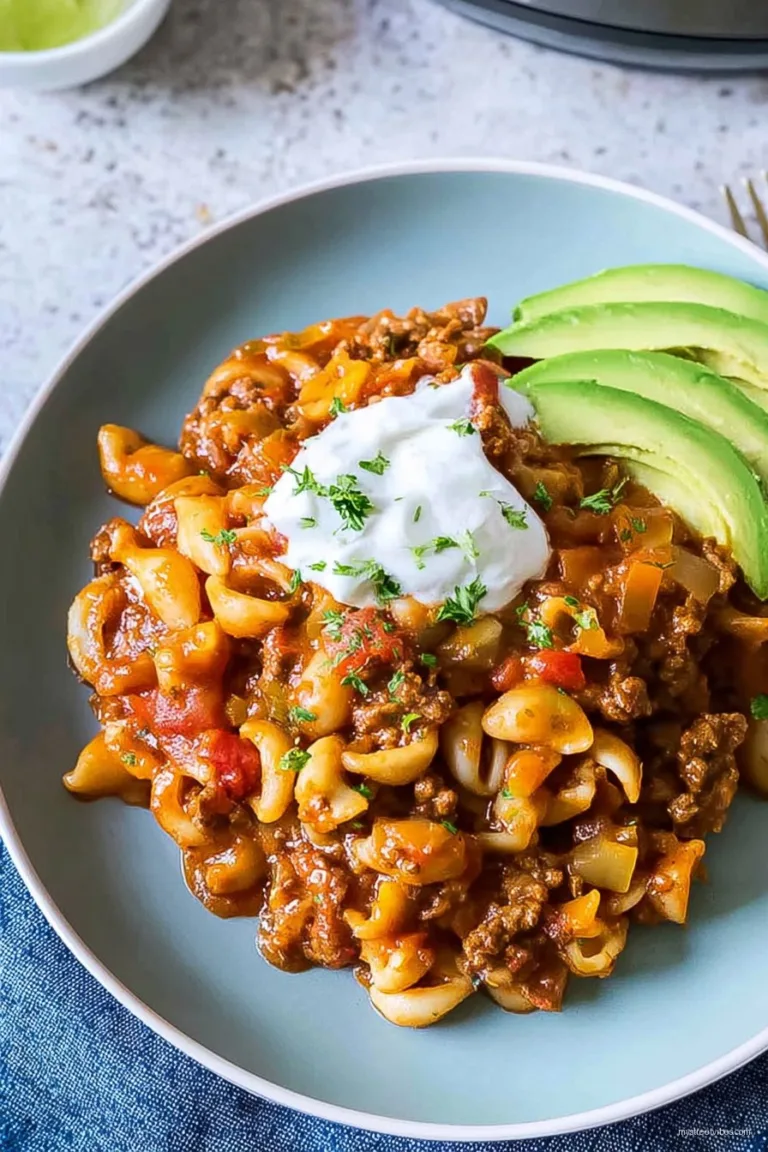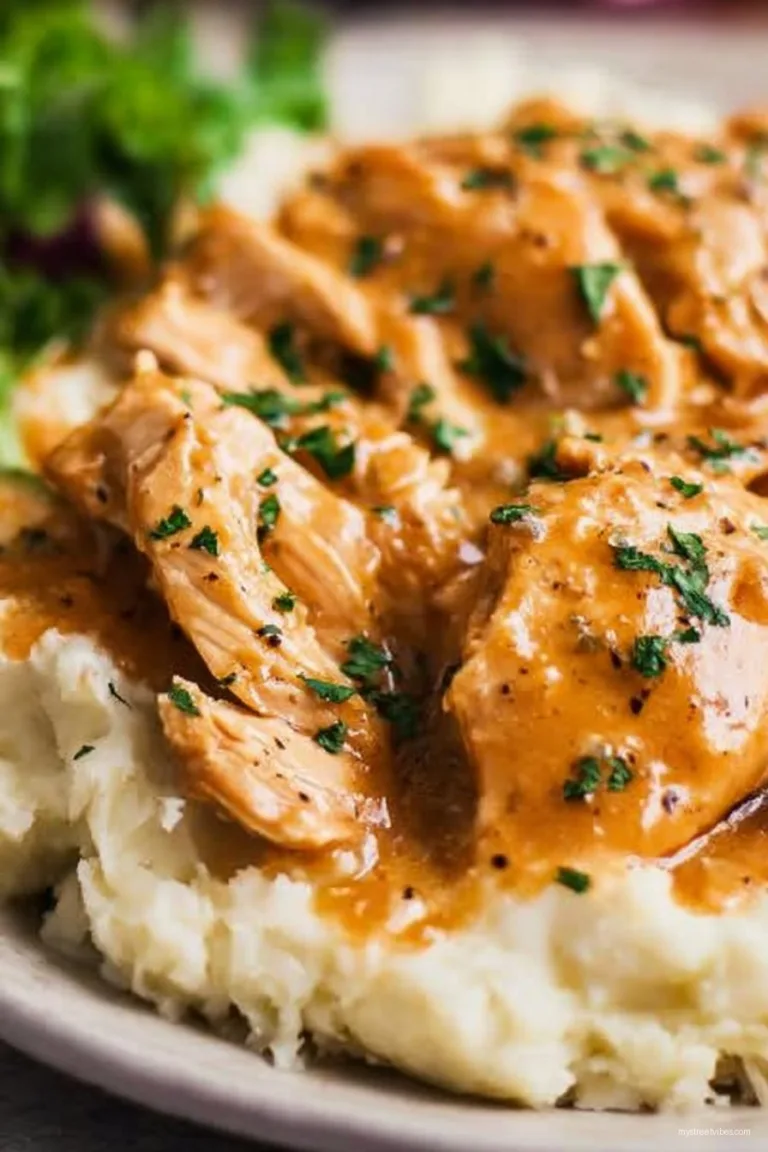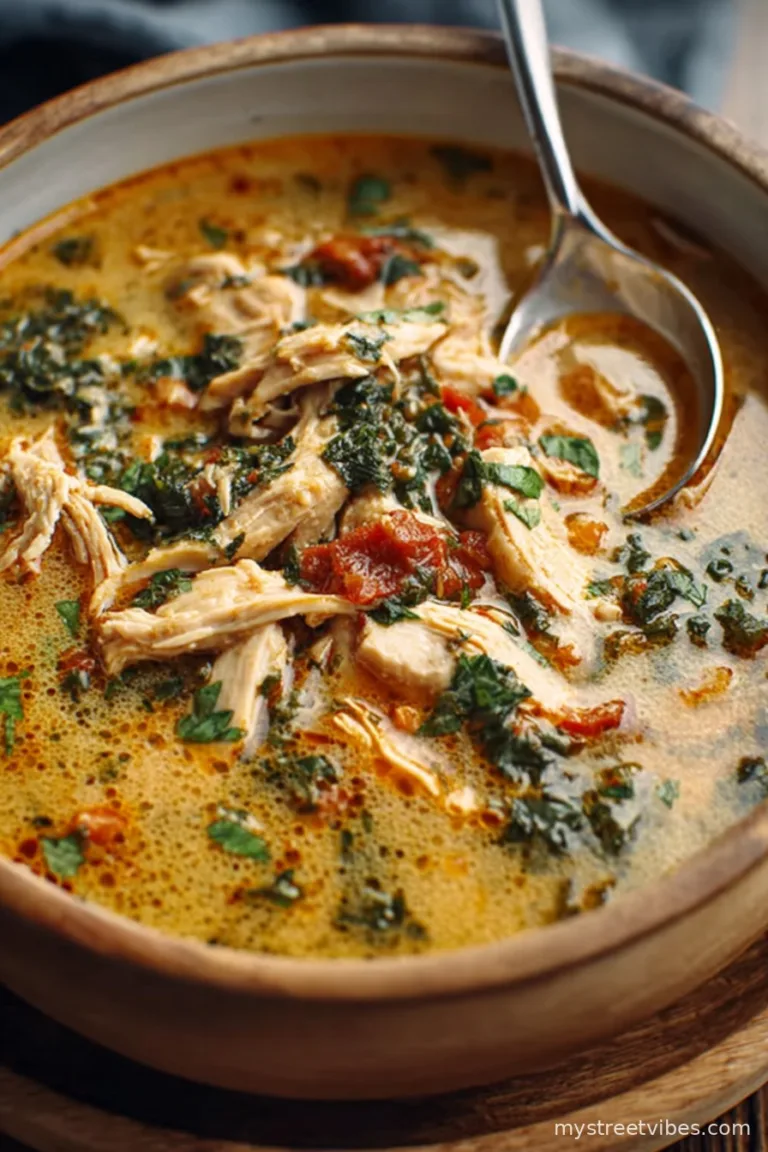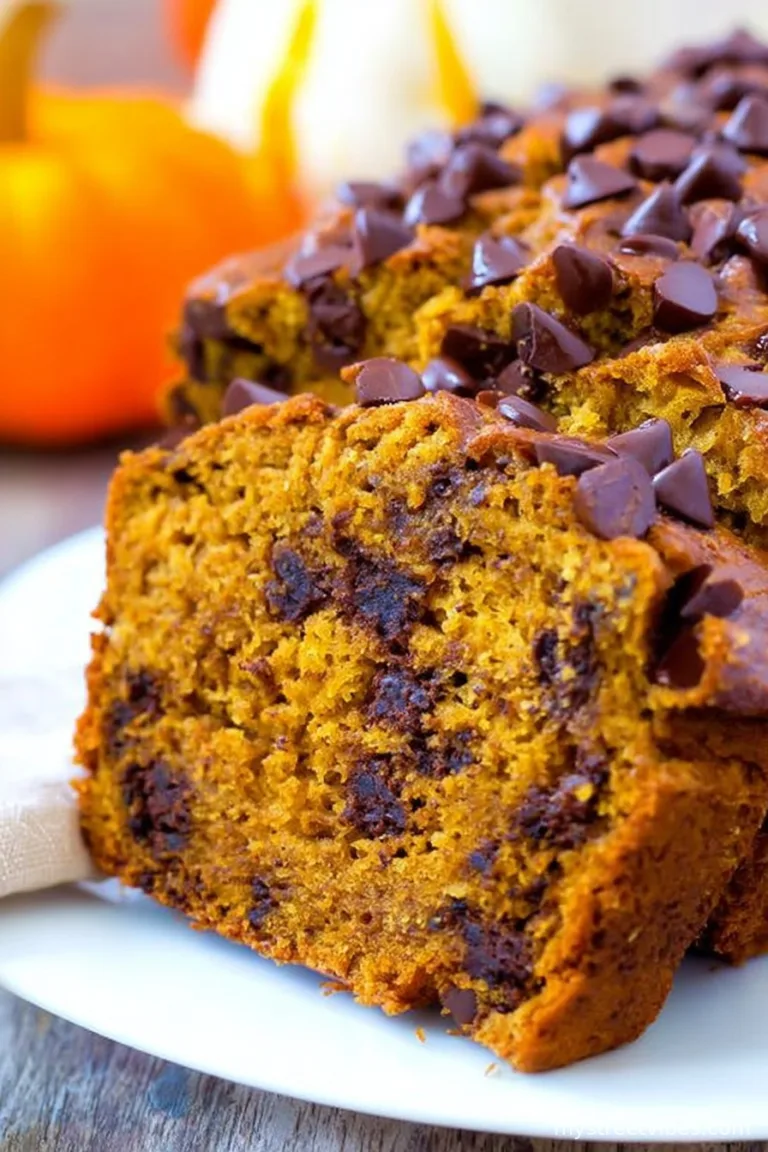Right—so there’s something about a massive, sizzling hunk of prime rib wrapped in garlicky herbs that gets my kitchen spinning into chaos (the good kind). My first time making this for Sunday dinner, my brother poked the roast with a fork and complained the house “smelled too meaty.” He ate three slices anyway. That’s when you know you’re onto something. Also, I have burnt myself more than once trying to baste it, so be careful. Oh, and if you have a nosy cat, just keep an eye out. Mine loves to leap for the counter right as it’s about to rest.
Why I Always End Up Making This (Even When I Swear I Won’t)
I pull out this Prime Rib (Garlic Herb Crust) recipe for birthdays, holidays, you name it. Sometimes I’m just craving leftovers for sandwiches. My family goes bananas for it, especially the crusty end bits. I used to get totally frazzled by timing the sides, but honestly, mashed potatoes can wait. The roast demands its own drumroll. It’s also the only roast I haven’t totally dried out—even that dreadful time I forgot the meat thermometer (but let’s not relive that). Actually, I make this when I want to look like a fancier cook than I am, but with less stress than you’d think from a roast this big.
What You’ll Need (Optional Chaos Included)
- 1 bone-in prime rib roast (about 5-6 lbs; I’ve grabbed boneless in a pinch—cooks quicker, but you miss the drama of the bones)
- 4-5 cloves garlic, minced (or more… I love garlic, so sometimes it’s 7)
- 2 loving handfuls fresh rosemary, chopped (in a bind, dried rosemary will do but go easy on it—it’s punchier)
- 2 heaping tablespoons chopped thyme (my neighbor grows the best, but supermarket stuff works too)
- 1/4 cup olive oil (good stuff is nice, but I think any plain bottle is fine)
- Kosher salt—lots (at least 2 tbsp; don’t go shy)
- Black pepper, freshly cracked if you can (my grandmother always warned ‘never pre-ground’, but, eh, sometimes I do)
- 1 tablespoon Dijon mustard (optional—sometimes I forget this step and nobody notices)
- 1-2 tsp smoked paprika for a subtle kick (totally optional, but I like the color)
How I Actually Cook This (More Or Less)
- First—take the roast out from the fridge at least an hour, even two, before roasting. I’ve skipped this out of impatience, but letting it come to room temp really does help keep it juicy (though I get twitchy waiting).
- Preheat your oven to 475°F (I’ve gone as low as 450 when my oven’s being stubborn—it’ll still work, just takes a bit longer). Line your roasting pan with foil unless you like doing dishes.
- Mix the garlic, rosemary, thyme, olive oil, salt, and pepper together in a bowl. This is where I sometimes add mustard and smoked paprika—depends if I remembered to buy them.
- Pat that roast dry with paper towels, then rub the herb garlic mixture all over it with your hands (messy, but fun—just don’t touch your eyes after). If you want to tie up the roast with twine for a tidy shape, go ahead, but I get lazy and don’t always bother.
- Pop the roast bone-side down in your pan. Roast for 20 minutes to get that crust started, then reduce the oven to 325°F. Don’t open the oven too much—the crust likes peace and quiet.
- Continue roasting about 13-16 minutes per pound for medium rare (trusty [Beef Checkoff guide](https://www.beefitswhatsfordinner.com/cooking/roasting) helps with times). I start checking internal temp at around the 80-minute mark for my usual size. Pull it when it hits 120°F-125°F for rare-ish or 130°F for medium. Remember, it keeps cooking a bit while resting. On second thought, better under than over!
- This is the hardest part—REST IT. 20-30 minutes, loosely covered in foil. It looks a bit sad when you do this, but the juices magically settle. Here’s where my husband tries to sneak an end piece. Every. Single. Time.
- Slice between the bones yourself for big slabs, or go thinner if you like things dainty. (Pro tip: If you’re using a serrated bread knife because your carving knife vanished, that actually works okay. Mostly.)
The Notes I Wished Someone Had Told Me
- Resting is not “optional”—I rushed it once and juice went everywhere.
- If you forget to take the chill off the roast, tack on a bit more roasting time and don’t panic. It’ll get there.
- If your crust looks dark in spots, relax! That’s the good stuff, kind of like the crispy corner piece everyone fights for.
- You can prep the garlic-herb mix ahead; just store it in a jar in the fridge (though it makes the fridge smell impressively garlicky).
Things I’ve Tried (Some More Than Once)
- Using dried herbs in winter: passable, but I miss the real deal. Maybe add a touch less if dried—it’s potent.
- Once I swapped olive oil for melted butter. Super tasty, but the crust went a bit wild.
- I tried crusting with horseradish once. My dad loved it, but the rest of us found it a bit too nostril-clearing. You can, if you’re into that kind of rush.
- I also did a coffee rub experiment—honestly, it was a mistake. Nobody wanted seconds except Uncle Pete (he likes everything though).
What Equipment Do I Really Need?
- Roasting pan (but I’ve done it in a giant Pyrex dish—just keep an eye on drippings overflowing)
- Meat thermometer (okay, it’s kind of essential for stress-free results, but if you’re feeling bold, trust your instinct… I usually chicken out at the last minute and borrow one from my neighbor)
- Cutting board with grooves (unless you love mopping juice from your counter)
- Sharp knife – a bread knife totally works in a pinch. I’ve even used a clean gardening lopper once, but that was… messy.
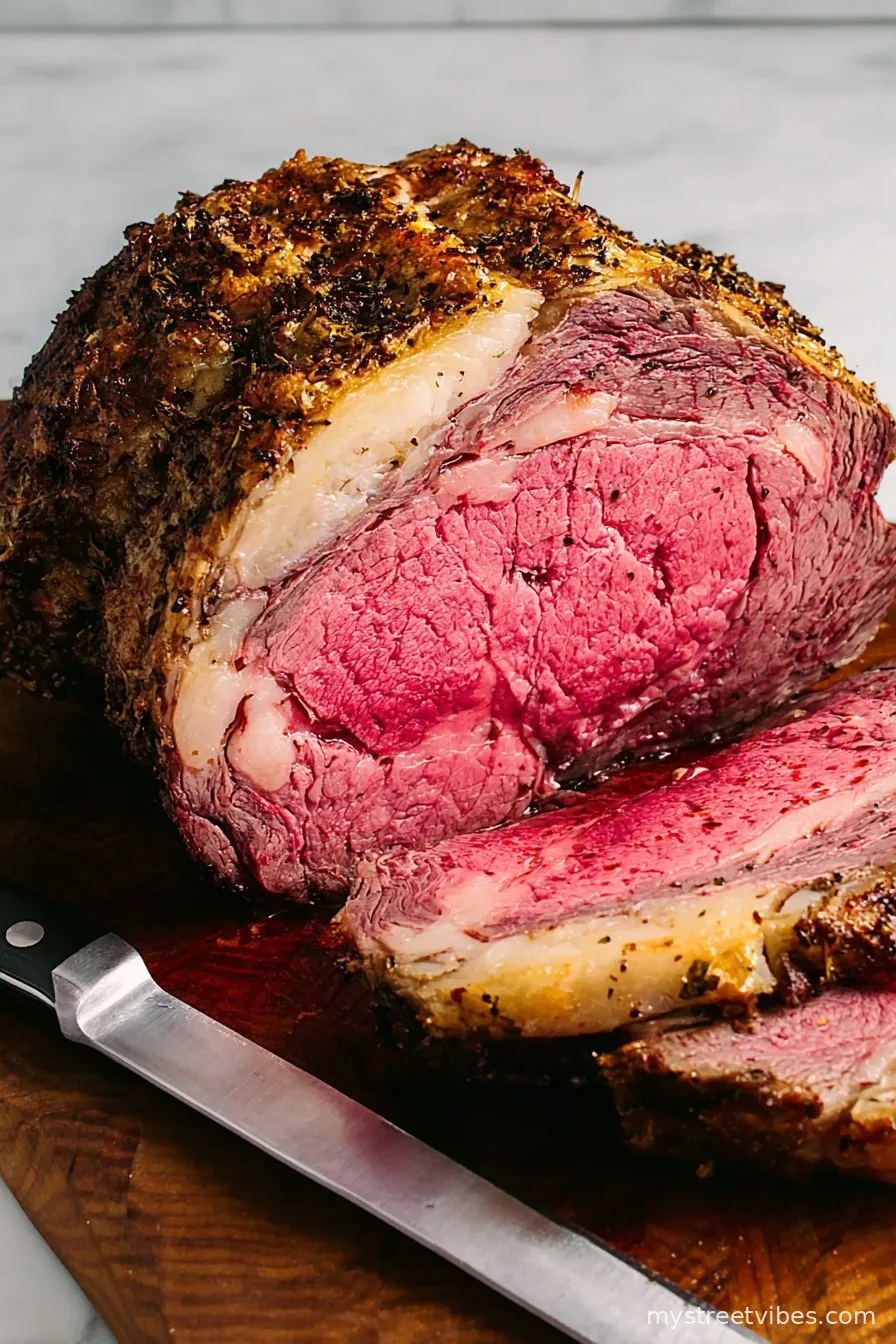
Storing Leftovers (If You’re Lucky…)
Wrap any leftovers real tight in foil or a container and pop them in the fridge. They’ll keep nicely for two or three days, honestly maybe more, though in my house they vanish within 24 hours (prime rib sandwich at midnight, anyone?). If you want to reheat, do it low and slow in the oven, splash of broth to keep it juicy, or just eat cold right from the fridge—no judgment.
How I Like to Serve This Roast (But Do Your Own Thing)
I serve thick slices with heaps of creamy mashed potatoes and some sort of green veg (usually asparagus, but peas if I’m in a hurry). My family started adding Yorkshire pudding after 2020 and now I can’t get out of making it. My cousin insists on crusty bread “to mop up the good bits.” Sometimes I make a red wine pan sauce, but that’s only if energy allows. Oh—gravy from the drippings is also fabulous, if you feel up to a bit more faff.
Lessons I Learned The Hard Way
- I once tried cranking the oven to speed things up—ended up smoking out the kitchen and having to open every window. Take your time; good things happen slow!
- Basting’s not needed here—I used to fuss with it but the herb crust is happiest left alone.
- Letting the carving knife dull is a rookie move. Actually, one year I forgot to sharpen it and used kitchen shears. I don’t recommend that.
FAQ (Pulled Form Real DMs and Dinnertime Dramas)
- Q: Can I make this with a smaller roast for two?
A: Actually, yes! Just halve the spices and maybe check doneness earlier. The method doesn’t change. - Q: What if I don’t have fresh herbs?
A: Dried are okay—just use about a third as much, and consider adding a squeeze of lemon over the finished roast for zing. I got that idea here. - Q: Can I start roasting straight form the fridge?
A: You can, but the meat’ll cook unevenly—cold centers, overdone edges. Let it sit out if you can, but if you forget, it’s not a disaster; just check temps carefully. - Q: I have no roasting rack. What now?
A: Crumple up some foil to lift the beef, or settle it on top of chunky-cut onions and carrots. Tastes great too! [This video helped me out once](https://www.youtube.com/watch?v=Kizekz279rs). - Q: Why does it sometimes taste better the next day?
A: I think the flavors settle and get even richer—plus, it’s way easier to slice cold if you want those tidy sandwich slices.
If you’ve gotten this far, you deserve a cup of tea (or something stronger). Just sprinkle a little salt on your next roast and I promise—Prime Rib (Garlic Herb Crust) will become that recipe everyone starts asking about. Cheers!
Ingredients
- 1 (5-pound) bone-in prime rib roast
- 6 cloves garlic, minced
- 2 tablespoons fresh rosemary, chopped
- 2 tablespoons fresh thyme, chopped
- 2 tablespoons olive oil
- 2 teaspoons kosher salt
- 1 teaspoon freshly ground black pepper
- 1 tablespoon Dijon mustard
Instructions
-
1Remove the prime rib from the refrigerator and let it sit at room temperature for 1 hour before roasting. Preheat your oven to 450°F (232°C).
-
2In a small bowl, combine minced garlic, rosemary, thyme, olive oil, kosher salt, black pepper, and Dijon mustard to form a paste.
-
3Rub the garlic herb mixture all over the prime rib roast, coating it evenly.
-
4Place the roast bone-side down on a rack in a roasting pan. Roast at 450°F (232°C) for 20 minutes to develop a crust.
-
5Reduce oven temperature to 325°F (163°C) and continue roasting until the internal temperature reaches 130°F (54°C) for medium rare, about 1 hour 40 minutes.
-
6Remove the roast from the oven, tent with foil, and let rest for at least 20 minutes before slicing and serving.
Approximate Information for One Serving
Nutrition Disclaimers
Number of total servings shown is approximate. Actual number of servings will depend on your preferred portion sizes.
Nutritional values shown are general guidelines and reflect information for 1 serving using the ingredients listed, not including any optional ingredients. Actual macros may vary slightly depending on specific brands and types of ingredients used.
To determine the weight of one serving, prepare the recipe as instructed. Weigh the finished recipe, then divide the weight of the finished recipe (not including the weight of the container the food is in) by the desired number of servings. Result will be the weight of one serving.
Did you make this recipe?
Please consider Pinning it!!
